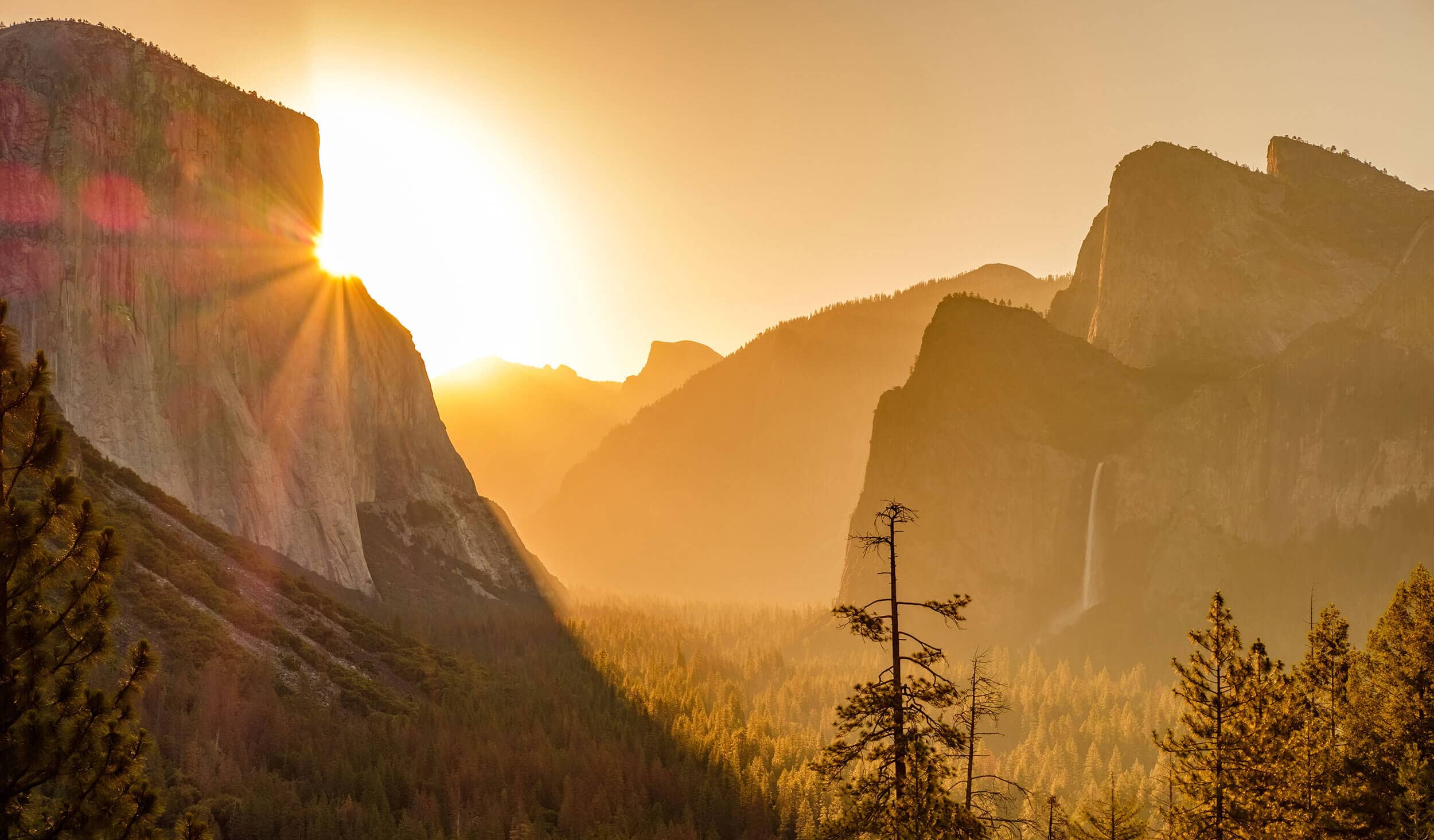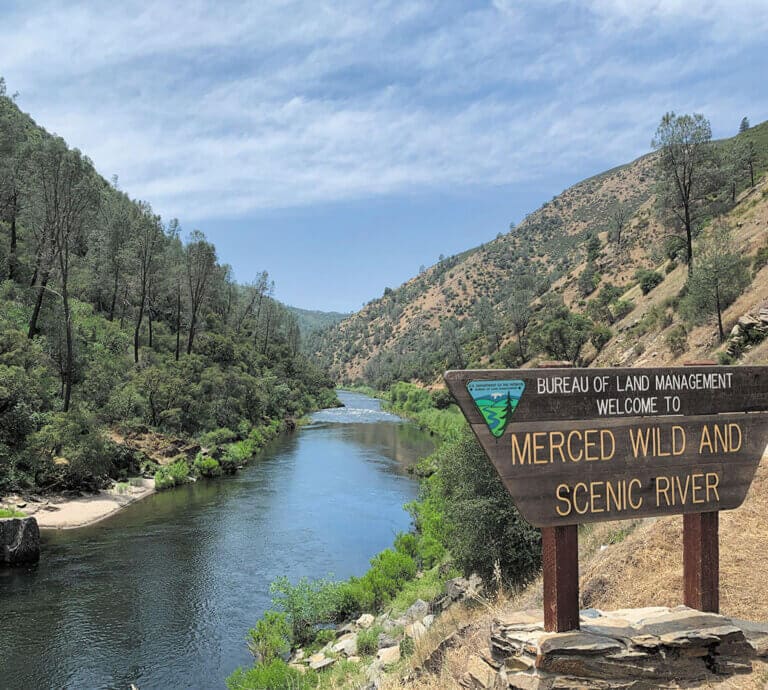
Legend has it that renowned Yosemite Ranger Carl Sharsmith was once asked by a visitor, “If you had only one day in Yosemite, what would you do?” The veteran ranger and Yosemite-lover looked solemn and replied “Madam, if I could only have one day in Yosemite I’d sit by the Merced River and cry.”
While it’s certainly an exaggeration that you should just cry at Yosemite if you only have one day, it does illustrate how those who really know the park feel about it and how you will too if you give yourself just a little extra time to explore.
The optimal time to explore the park would be several days to a week, when you can work into the schedule several days of long hikes, as well as plenty of time for lounging by the languid Merced River or cozying up to the crackling fireplace with a good book. However, two days will be enough time for one great hike (the best way to see Yosemite) and a few other glimpses into what this 1,200 square-mile UNESCO World Heritage site and natural wonder reveals to visitors. Here’s our suggestion for a quick two-day tour that will hopefully help you plan your amazing Yosemite trip.
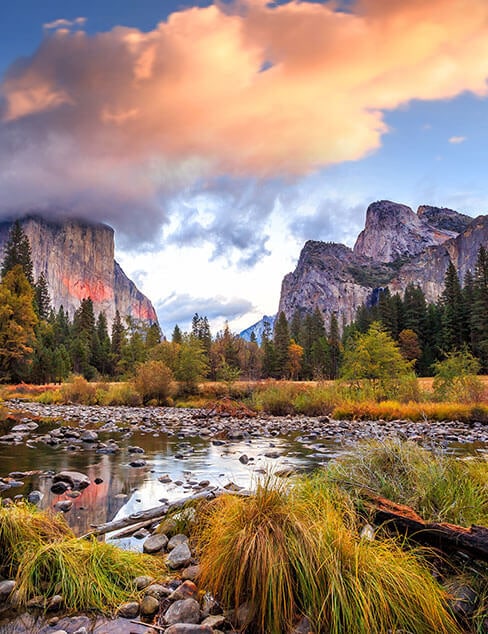
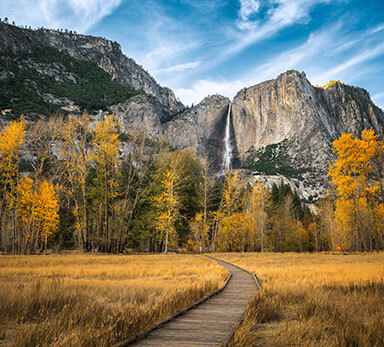
Depending on where you are coming from you may see some very interesting things along your tour to Yosemite Valley. Take your time, stretch your legs with while catching the sights, and make yourself at home.
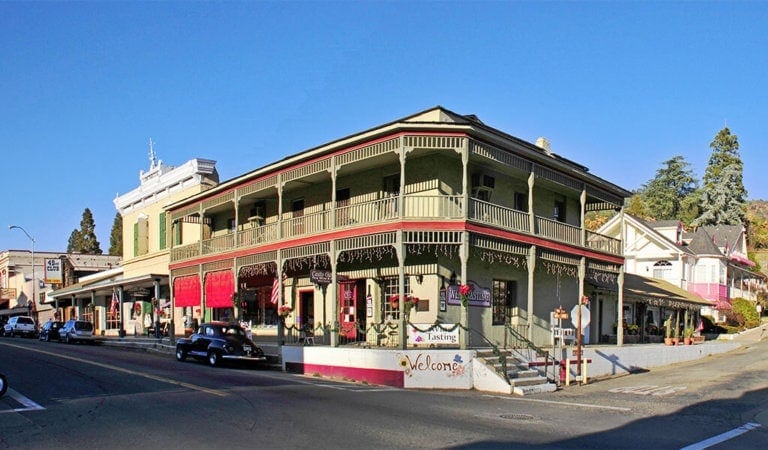
If you are coming from San Francisco, you may be making your journey along Highway 140 which will bring you through the lovely Gold Rush town of Mariposa, a great place for a variety of lodging and a good stop for lunch, museums, and shopping in the Old Town District. If you are continuing into Yosemite via Highway 140 you will also pass through the Merced River Canyon. In the spring this is the place for intense Class IV rafting on the rapids, but in the summer it becomes a lazy river perfect for swimming and sun bathing. In the late winter and early spring, you can also start to see some of the incredible wildflower displays that make this region famous with photographers.
If you are coming from Highway 41 through Fish Camp, be sure to stop at Wawona to see the Victorian-era Wawona Hotel and the Pioneer Yosemite History Center. As you get closer to Yosemite Valley you will also want to make a stop at Glacier Point. It is an hour-drive from Yosemite Valley off Highway 41, but it is without a doubt one of the most sweeping vistas in Yosemite, showing off an incredible view of Half Dome.
In summer time, you may be coming via Tioga Pass or Highway 120, through the High Country region of the park. If so, you must stop at the aquamarine blue waters of Tenaya Lake, the so-called “jewel of the high country.” If you are having a hard time deciding which of these amazing routes you want to take then we recommend entering the through one of the four entrances and exiting through another as you continue your trip to make the most of your short time. See the map to plot your route.
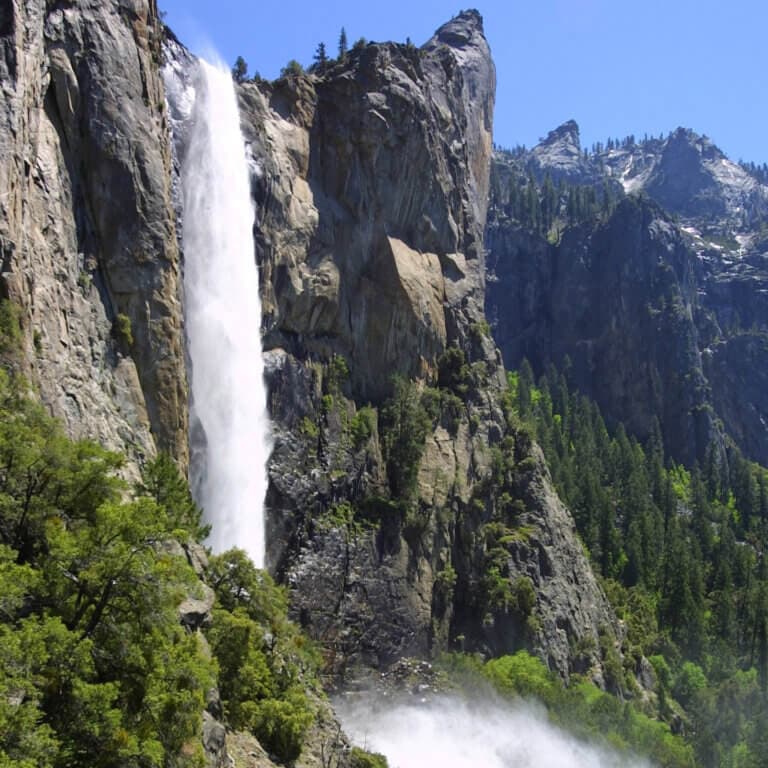
If you have arrived early in the day you may want to get a quick overview of the Valley Floor, which is the most famous 7 square miles in the park well-known for its incredible views of Half Dome, El Capitan and Yosemite Falls (seasonal).
This area is relatively flat which makes it ideal to walk all year round or you can rent cruiser bikes in spring and summer. If you aren’t up to a hike or bike ride, you can also jump on the Valley Floor Tour. The tour departs several times daily and provides a good overview of the main sights of the Valley Floor including Tunnel View and Bridalveil Fall. This is the shortest way to take in the major Valley sights, taking about two hours. A walk will take longer, especially as you will most likely want to linger a awhile at each location. There are also free shuttle buses that traverse the Valley Floor that you can hop on and hop off at your leisure. While the tour is convenient we do recommend taking in a short hike at some point, perhaps an easy walk or bike ride to Mirror Lake would be a great finish to your first day in Yosemite!
Check out the
Yosemite Guide
See what free ranger programs are happening during your visit. Get the guide when you enter the park or download it in advance.
Younger visitors (including those who are young at heart) love the Junior Ranger programs to learn more about the park’s ecology and stewardship.
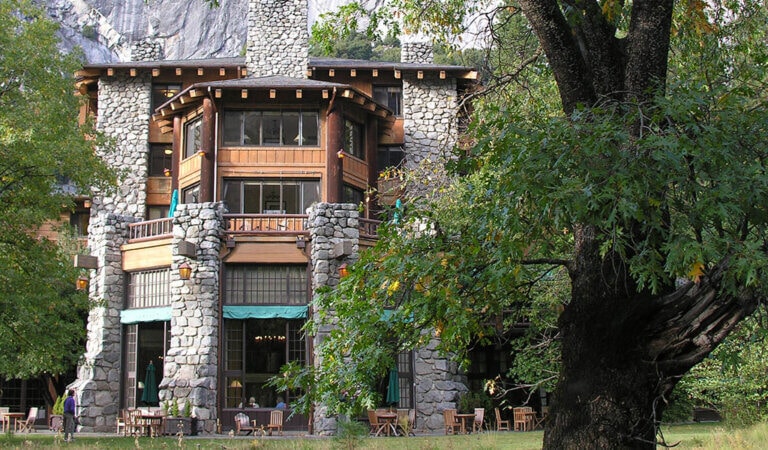
Once you have taken your initial shots of Half Dome, El Capitan and Yosemite Falls (seasonally March-June or sometimes in the late fall) you can head back to Yosemite Village to explore a little more. Visit the Yosemite Museum to experience Native American cultural including massive hand-woven baskets. You might even see a cultural demonstrator who can teach about Miwok and Paiute Native American traditions in Yosemite. Wander around the replica village by the Museum or head down to the nearby cemetery to see the headstones of Native Americans and pioneers.
Nearby is The Ansel Adams Gallery if you are interested in checking out Yosemite-inspired art or you can catch a quick lunch at Degnan’s Deli or head to the The Ahwahnee Hotel to enjoy the finest cuisine in the park. Even if you aren’t up for a gourmet experience, you still must stop by The Ahwahnee hotel. This hotel was built in 1927 and has been the lodging for queens and presidents alike. It’s beautiful Art Noveau architecture and intricate Native American motifs, make this opulent hotel a must-see for any trip to Yosemite. Completely open to the public, feel free to lounge in the Great Hall or join one of the many culinary festivals such as the Vintners’ Holidays that take place each year during the autumn and winter seasons.
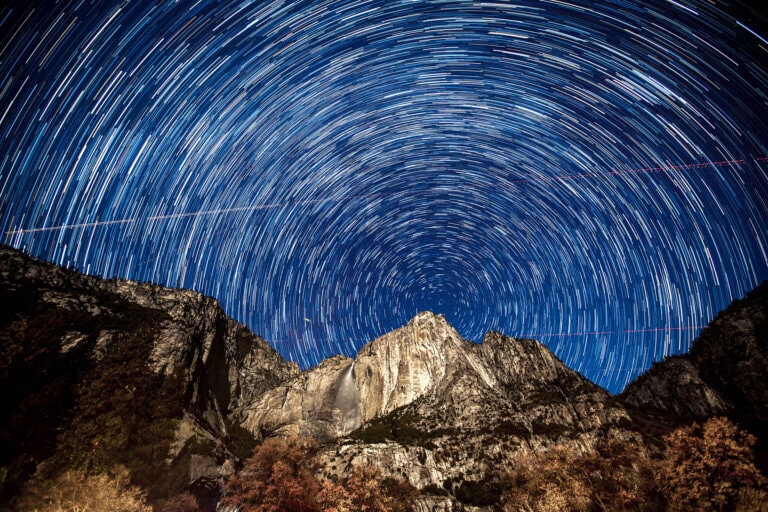
Depending on your where your lodging is and your budget, your evening may include an opulent dinner at The Ahwahnee Hotel. Discover healthy and hearty cuisine at Jackalopes Bar and Grill at Tenaya at Yosemite, or relax with a family-friendly meal at one of the Curry Village restaurants or at one of the many eateries in nearby Mariposa. Or consider cooking over an open BBQ at your campsite. There are many dining options available.
If you are staying in Yosemite overnight you will certainly want to join a star-gazing tour (year round, weather permitting).
No matter what you decide to do your next day is going to be a big one, so get plenty of rest!
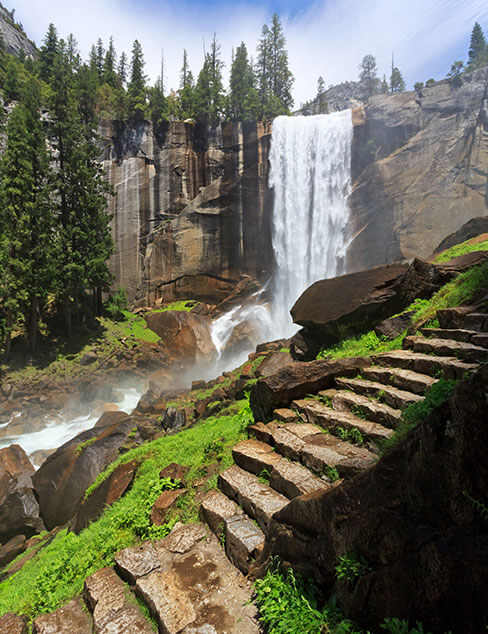
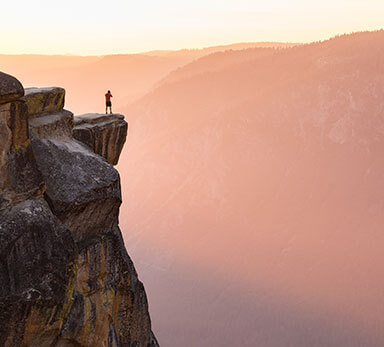
The best way to experience Yosemite is to get on the trail. With more than 800 miles of world-class trails, Yosemite is truly a paradise for any hiker. But you don’t have to be amazingly fit to enjoy Yosemite’s Trails.
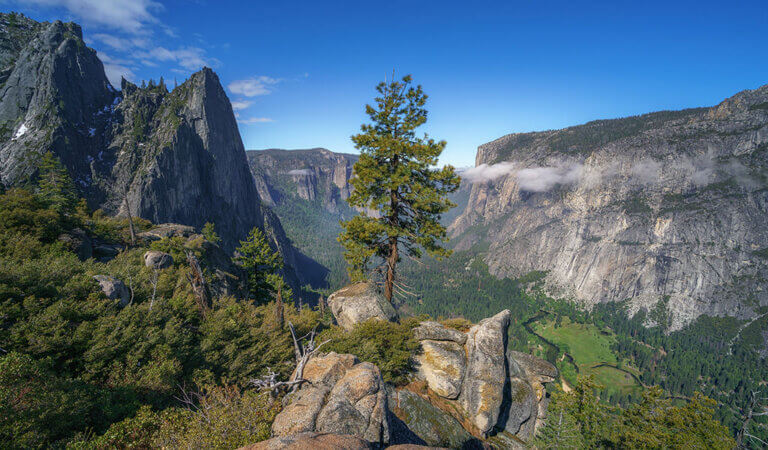
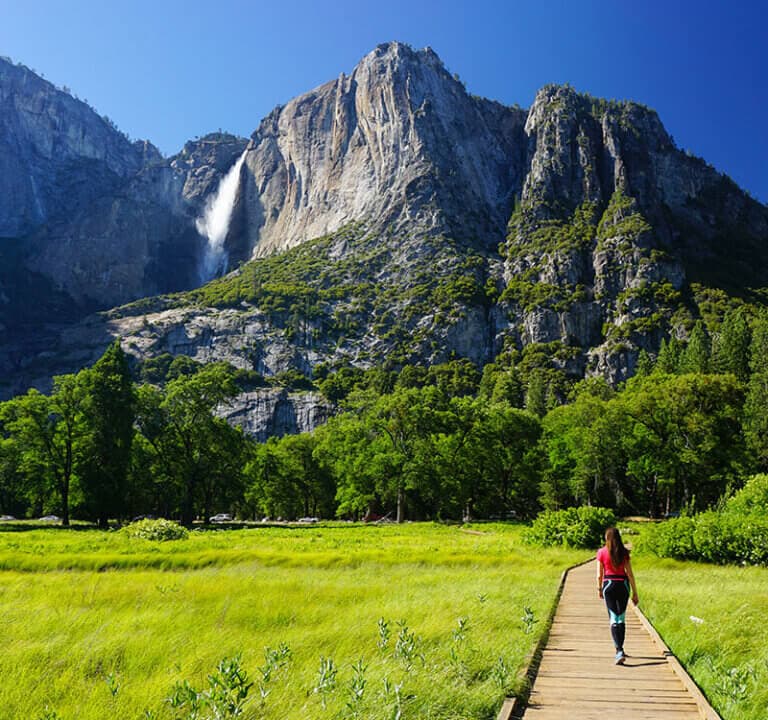
More Trail Suggestions
Explore easy trails such as Lower Yosemite Falls and Bridalveil Fall if you are looking for a short walk that will bring you close to these wonders. Both trails a fully paved, pet-friendly, and wheel-chair accessible, so they truly are perfect for anyone. If you are looking for more of an adventure, seek out the Mist Trail.
The Mist Trail is one of Yosemite’s most popular trails, it is a little more difficult, but has several options depending on the length of hiking you want to do. Hike to the base of Vernal Fall (about 2 miles roundtrip) or bring a sack lunch and continue on to the top of Vernal Fall. A little more difficult but worth it for the views of rainbows and the refreshing spray you feel as you wander up beside this waterfall. The trail is usually fully accessible starting in early spring and offers some of the best views in the Valley.
If you are very fit, you will want to continue on to Nevada Fall with its lovely views of Liberty Cap. If you were to continue the trail all the way you would find yourself on the top of Half Dome, but this is about a 12-hour that requires tons of endurance, and of course, advanced permits.
Other good options for a first time visitor would be (in order of difficulty): Lower Yosemite Fall, Vernal Fall, or Four Mile Trail (great options year round, typically) or Panorama Trail (late spring- fall). Lower Yosemite Fall is the easiest, even for those who require wheel-chair assistance, but the other three offer more sweeping views of Yosemite’s iconic valley that can only be viewed by hiking.
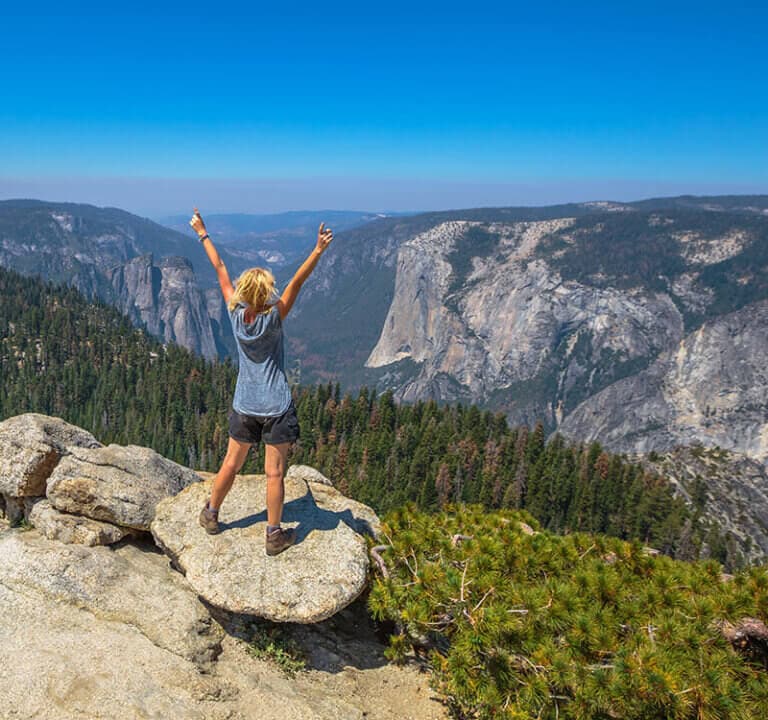
If you want to explore the valley from above and you are there when Glacier Point Road is open (May-December) you may also want to take the Sentinel Dome Trail for similar views to Glacier Point but much fewer crowds. Pack a picnic dinner to enjoy the sunset (just don’t forget your head lamp for the way back!).
These are just a few of the many trails to explore. You may want to stop by a visitor center on your way into Yosemite to inquire what the best trails are during your visit depending on your interest level, fitness, and the season.
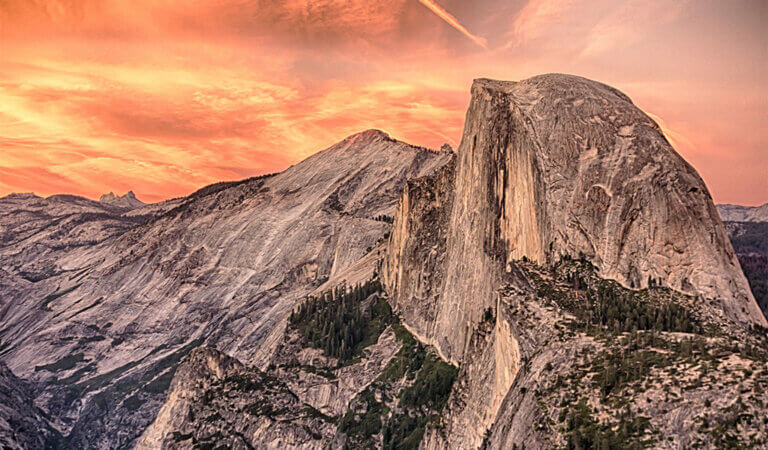
Your second night in Yosemite you should definitely try to find a prime spot for sunset. Check ahead of time to see when it is and head over to Cook’s Meadow (if it’s winter or spring) or up to Glacier Point or Sentinel Dome (if it is summer or autumn).
Check to see if there is a full moon and if yes, catch the lunar rainbow (see below) particularly in the early spring.
If this seems like a lot of action for two days – you are right! There is so much to explore in Yosemite and Mariposa County. Since you surely have decided to come back to explore more (we didn’t even mention the High Country and Hetch Hetchy!) next time you will choose a different season so that you can see how the park changes all year round. See you on the trail!

